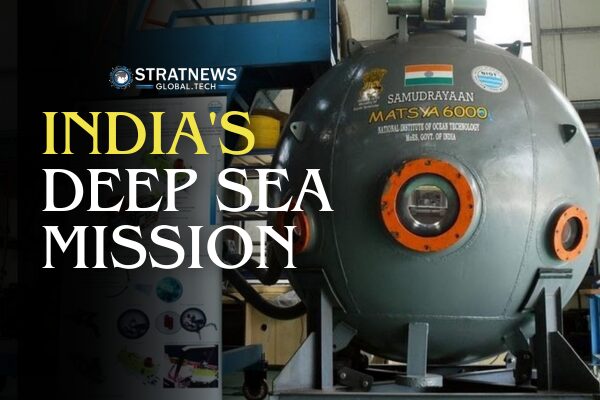India’s ambitious deep-sea exploration project, Samudrayaan, has reached a major engineering milestone. The National Institute of Ocean Technology (NIOT), under the Ministry of Earth Sciences (MoES), is developing MATSYA-6000—a manned submersible capable of reaching ocean depths of up to 6,000 metres.
At the core of this Human Occupied Vehicle (HOV) lies a specially designed spherical capsule, developed in collaboration with ISRO’s Vikram Sarabhai Space Centre (VSSC).
Made in India: A Titanium Sphere for the Deepest Dives
The capsule, called the personnel sphere, is 2.26 metres in diameter and has a wall thickness of 80mm. It is made from a high-grade Titanium alloy (Ti6Al4V – ELI) and is designed to withstand immense pressures—up to 600 bar—at temperatures as low as -3°C. It will carry a three-member crew into the deep ocean.
This is a pioneering feat for India’s marine technology efforts, pushing the limits of engineering and materials science.
High-Tech Welding and Inspection
One of the biggest challenges was developing the welding process for such thick titanium. The Liquid Propulsion Systems Centre (LPSC) was tasked with this job. Their existing Electron Beam Welding (EBW) setup, capable of handling up to 20mm thickness, was upgraded to a massive 40kW capacity to handle the new requirements.
Over 700 weld trials were conducted to refine the process. For safety and quality, state-of-the-art non-destructive testing methods were developed. These include advanced techniques like Time of Flight Diffraction (TOFD) and Phased Array Ultrasonic Testing (PAUT).
To inspect the welds, a new X-ray radiography facility operating at 7.5MeV—far more powerful than standard X-ray machines—was installed.
India’s First Deep-Weld Success
After months of preparation and trial, the first full-scale weld on the actual hardware was successfully completed. This involved welding 80mm thick titanium over a total length of 7.1 metres, all completed in just 32 minutes. It’s the first time such a deep, high-precision weld has been achieved in India.
The entire welding process, inspection standards, and qualification protocols are now being reviewed by third-party certifiers.
This marks a huge step forward for India’s Samudrayaan mission and its capability to conduct human deep-sea exploration. Once completed, MATSYA-6000 will place India among the few nations capable of sending crewed missions to the ocean’s darkest depths.


